SMPT 2: Memory Encoding
1/38
There's no tags or description
Looks like no tags are added yet.
Name | Mastery | Learn | Test | Matching | Spaced |
|---|
No study sessions yet.
39 Terms
What is memory?
A psychological process of acquiring, storing, retaining and retrieving data. This data is an aggregate byproduct of our perception of reality
3 primary types of memory
Sensory
Short Term
Long Term
Sensory memory
This type of memory is the earliest stage, and typically lasts only up to a half second for visual, and four seconds for auditory
Iconic memory – visual in nature and stores for less than a second
Echoic memory - auditory, and can last for four seconds
Haptic memory – tactile, and can last for two seconds
Sensory memory passes a baton too short term memory
Short term memory
Also referred to as active or working memory
Lasts 20 to 30 seconds
Refers to only what we are consciously thinking at the moment
This memory type may be increased, using certain types of strategy like Chunking
“squirrel moment”
Long term memory
Stored for future accessibility and retrieval
Memory is passed on from short term memory and the information is regarded as outside of our awareness, unless it is accessed and moved to working memory/ short term memory
Long-term memory lasts a lifetime that you may not be able to easily access all the information stored
on a hard drive
Category subtypes: explicit and implicit
Explicit memory
Working: what you’re playing around with in your mind in the moment
Episodic: remembering events in your life, most tied to emotions and feelings
Semantic: store knowledge like academic information
Perspective: knowledge of upcoming events or appointments
Working and semantic typically go together
Episodic and perspective typically go together
Implicit memory
Priming: a person reacts in a specific way due to a previously exposed, stimulus or experience
Procedural: habits and skills, can be movement based “muscle memory“
Associative: the ability to remember the link between seemingly unrelated items
Nonassociative: can be habituation or sensitization oriented, stimulus is not paired to behavior (feels unrelated)
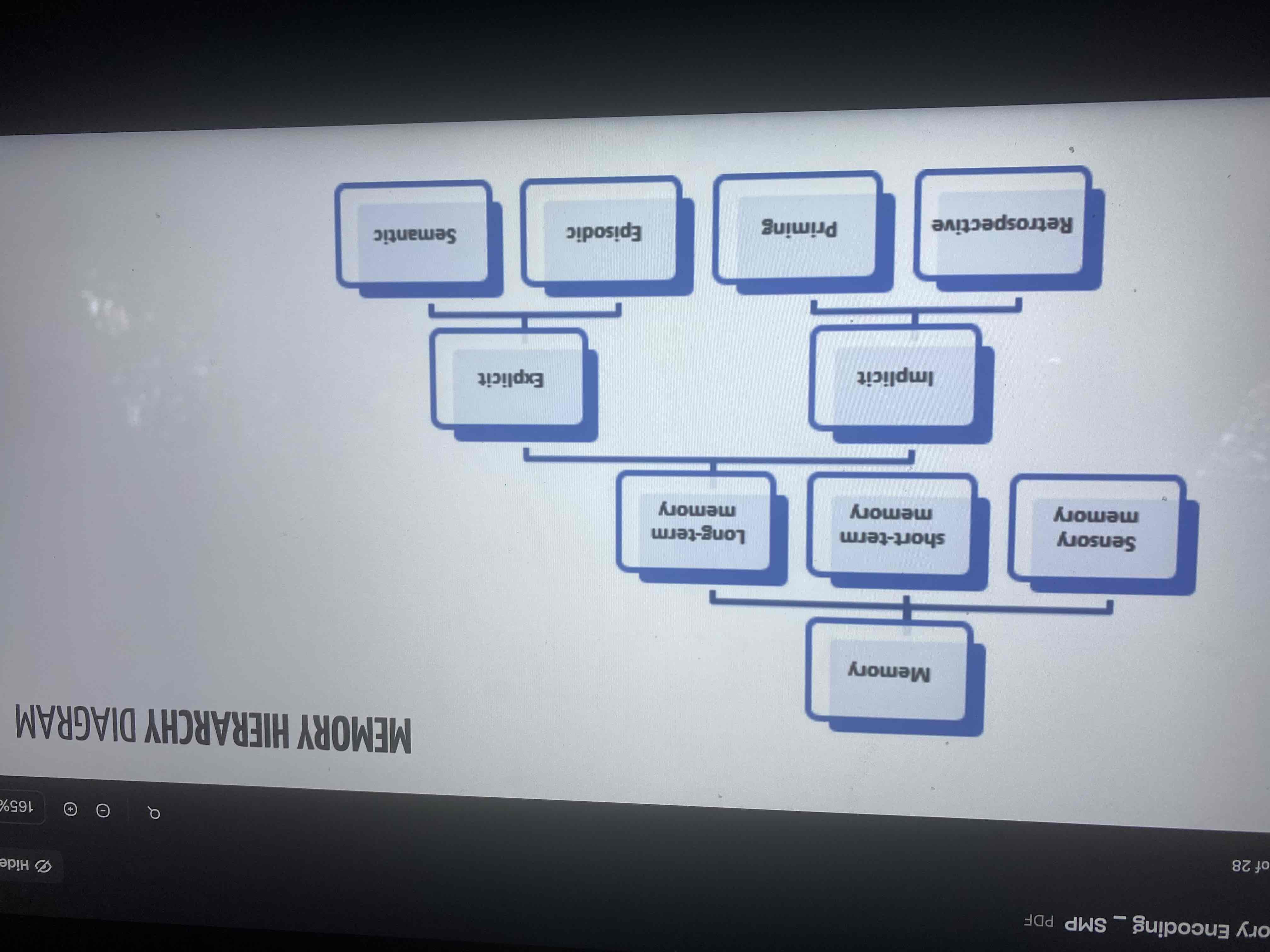
Memory, hierarchy, diagram
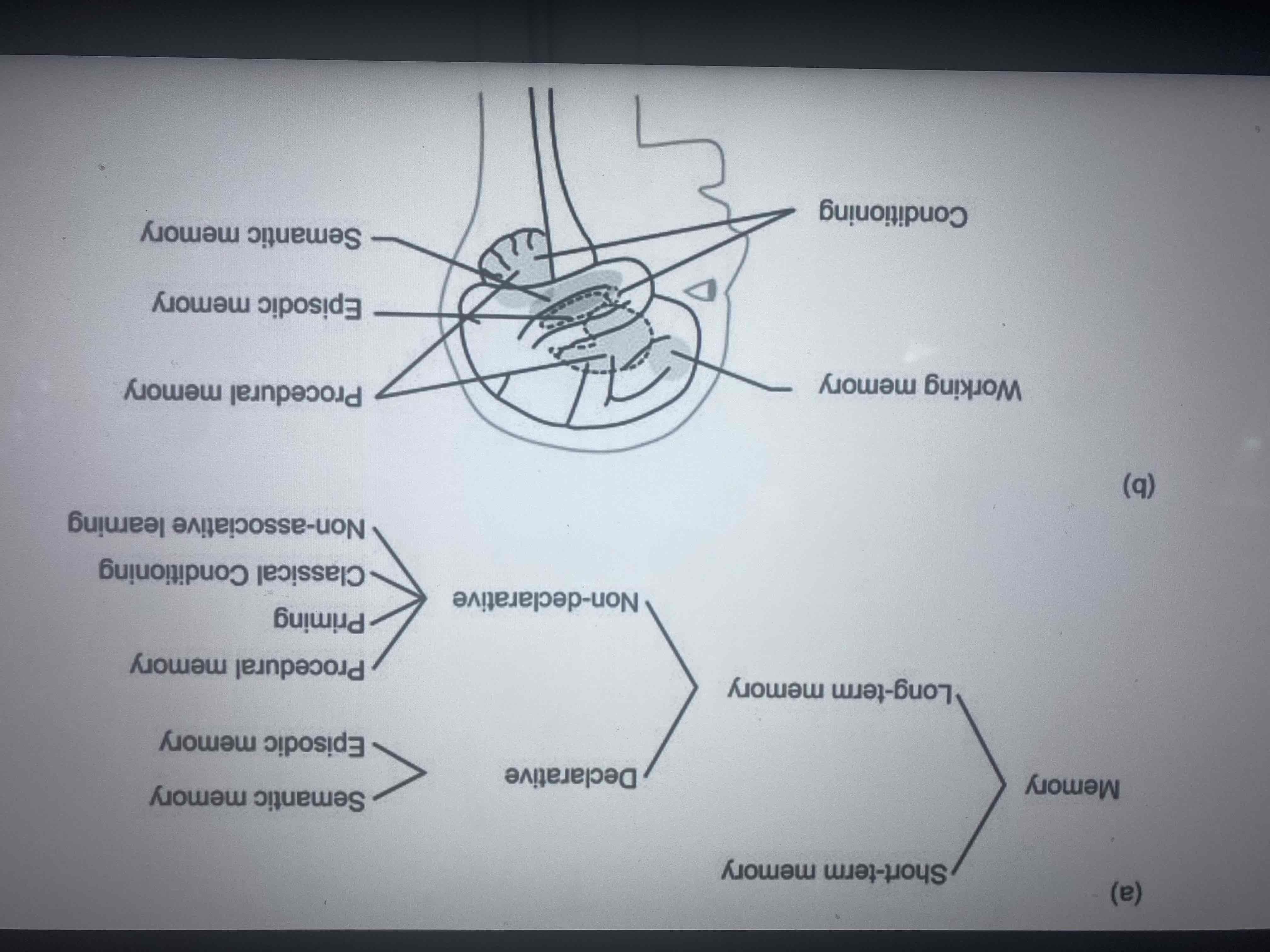
What is memory encoding?
The process takes raw data and transfers it into a usable format for processing and future retrieval
This process begins with sensory input and is changed and formed to be stored in the brain
Memory encoding: visual
Converting a visual image to understand it
Memory encoding: acoustic
Processing of sounds, words and other auditory input for storage and retrieval
Memory encoding: semantic
Sensory input that has a particular meaning of context.
This may include remembering concepts, ideas, definitions, and dates.
Memory encoding: elaborative
Simply means relating new information to prior knowledge. Memory is a combination of old and new information about some thing.
Memory encoding: tactile
Encoding and processing of feeling or touching something. Neurons in the somatosensory cortex.
Memory encoding: organizational
Classifying information to a sequence of terms. It includes categorization, listing, and grouping of information by noticing relationships among different items.
memory encoding is…?
The first step in the process of memory creation. It is a biological phenomenon that begins with perception and cannot be separated from the sensory experience.
Your hippocampus integrates these perceptions & the frontal cortex analyzes the experience for importance
Data is stored as electrical and chemical signals
What is a synapse?
Where a nerve cell connects to other cells
Electrical pulses, carrying messages transfer between cells
The electrical pulses across the synapse triggers, the release of neurotransmitters
The Neuro transmitters, then flood the space in between and dock with neighboring cells (receptors)
A typical brain can have about 100 trillion synapses
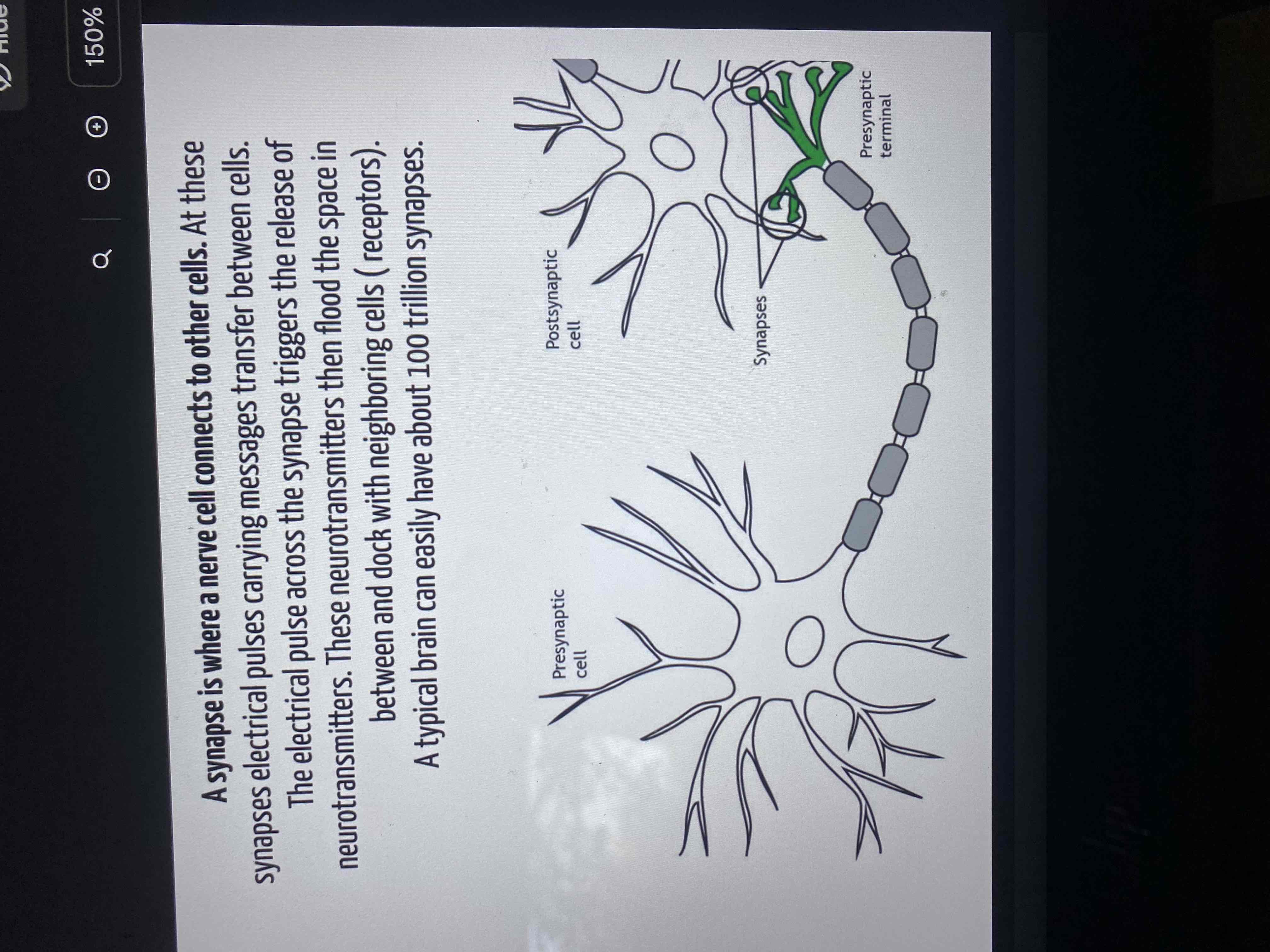
Where does memory encoding take place in the brain?
prefrontal lobe
Temporal lobe
Parietal lobe
Anterior hippocampus
Thalamus
Basal ganglia
During encoding: left frontal regions of brain
During retrieval: right superior regions of brain
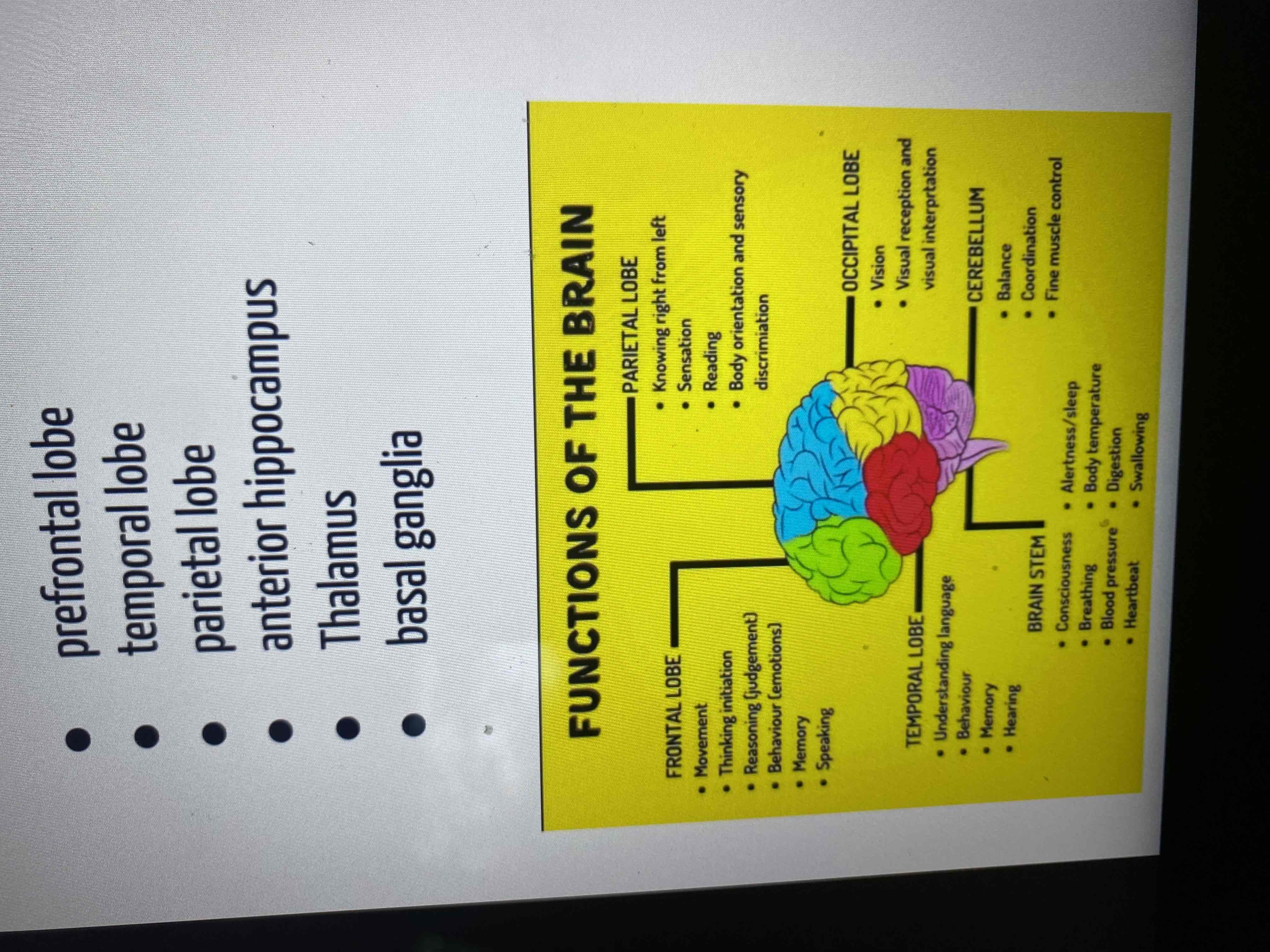
Encoding: acoustic vs. semantic
Encoding can be acoustic (based on auditory stimuli to implant) - short term
Encoding can be semantic (based on meaning and context to implant) - long-term
Frontal lobes
The “executive” functions
They help control
thinking / abstract thought
Mood
planning
organizing
problem-solving
thinking initiation
reasoning (social judgment)
behavior (emotions)
speaking/ speech production
short term memory
movement
Parietal lobes
Interprets sensory information like taste, texture, and temperature
Knowing right from left
Sensation
Reading
Body orientation, and sensory discrimination
Occipital lobes
Process, visual images from your eyes and connect them to stored images for recognition
Vision
Visual reception and visual interpretation
Visual awareness and visual processing
Temporal lobes
Help process sensory information like smell, taste, and sound as well as assist in memory storage
Hearing
Understanding Language
Behavior
Learning
Memory storage and consolidation
Verbal memory
Visual and auditory memory
Inner Brain consists of:
thalamus
Hypothalamus
Hippocampus
Thalamus
A gate keeper for messages passed between the spinal cord and the cerebrum
Hypothalamus
Controls emotions and regulates temperature and other survival based functions like eating and sleeping
Hippocampus
Sends memories to cerebrum to be stored as well as retrieves these memories later
Fire together wire together
Fire apart wire apart
The brain contains billions of nerve cells, meticulously, arranged to coordinate thought emotion behavior, movement and sensation. Each part plays an important role in the overall process of memory encoding.
These synapses create new circuits between nerve cells re-patterning the brain
Emotional tagging hypothesis
States that the activation of the hippocampus by experience sets the local synaptic tag that is reinforced by emotional arousal. The end results in a long-term synaptic modification affecting long-term memory.
This integrative view, makes the assumption that emotional conditions induced long-term neural plasticity in the amygdala, and that the interactivity between the amygdala, and the hippocampus are not static, as previously thought, but dynamic.
This means the individual history of the person will affect how memory is processed in the hippocampus.
Memory consolidation
Emotionally aroused memory can be consolidated after one experience
A process by which memories become more secure and less susceptible to break down over period of time.
In this process, circuits can get rearranged. Emotionally triggered. Memories consolidate in a different way. This can make them feel more overpowering.
Psychological salience
A primitive feature of the human mental state in which the perceptive response focuses on some thing that feels important
Arousal / Valence
Intensity of the level of autonomic activation that an event creates and ranges from calm (or low) to excited (or high)

Valence / Arousal
The level of pleasant mess, then event generates and is defined along a continuum from negative to positive
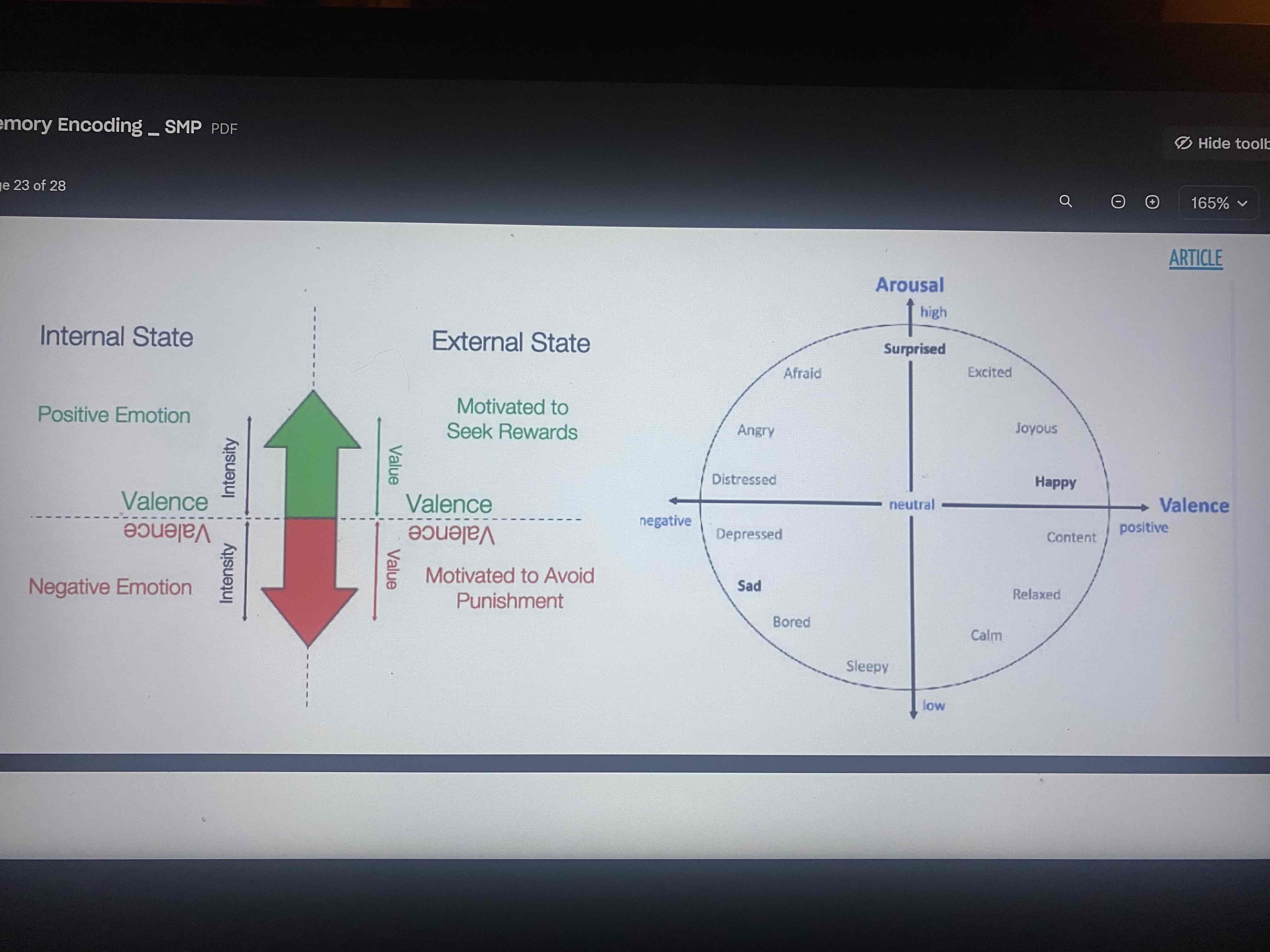
Traumatic memory
These types of memories are formed after experiences that cause high levels of emotional arousal and the activation of stress hormones. These memories can be stimulated through “involuntary recall, ‘nowness’, vividness, and immutability.“
These memories are stored in the emotional centers of the brain (amygdala and hippocampus) and these parts of the brain activate the body when reminded of something similar to or tangentially related to the event
Conscious mind
rationalization
Will power
Short term memory
Planning
Critical thinking
Decisions, judgment
Subconscious mind
Long-term memory
Emotions
Creativity
Habits
Unconscious mind
automatic control of pulse
Control of respirations and immune system
The role of the soma in memory encoding: triggering in body from traumatic memory
The body can trigger traumatic memory and be triggered by traumatic memory.
The body can house information that exists below the conscious level. This is often a form of protective mechanism. This type of memory can be disassociated and catch them off guard.
Memories that are state or position dependent, can be retrieved when the person is in a particular state or position
Tensional memory
Created in a particular connective tissue architecture formed by oriented collagen fibers this architecture changes accordingly to modification of habitual lines of tension, providing a possible medium term memory of the force is imposed on the organism